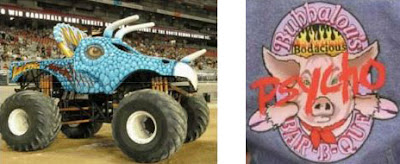TTAB Sustains Dave Brock's (HAWKWIND) Opposition to NIK TURNER'S HAWKWIND
The TTAB sustained this Section 2(d) opposition to Nik Turner's application to register the mark NIK TURNER'S HAWKWIND for "Entertainment services, namely, live musical performances by an individual or musical group." The Board found Opposer David Brock to be the owner and prior user of the mark HAWKWIND, and rejected Turner's claim that Brock had abandoned the mark. Brock v. Turner, Opposition No. 91214199 (June 28, 2017) [not precedential] (Opinion by Judge Ritchie).
Dave Brock co-founded the band HAWKWIND in 1969 and has been the only person who has been a member of the band continuously since its founding. Applicant Nik Turner admitted that Brock exercises artistic control over the band's music. Expert witnesses testified that Dave Brock and the band HAWKWIND are synonymous.
HAWKWIND toured the United States on various occasions from 1974 to 2007. A tour was planned for 2013 but, after bookings were made, the tour was cancelled due to Brock's poor health. HAWKWIND has been selling recordings in this country since 1972, as Turner admitted.
Turner acknowledged that he was not a founder of HAWKWIND. He left the band in 1976, and then returned from 1982-1984. He also acknowledged that he never controlled the band or its name, stating that "I, like every other member of the 'classic' line-up, was forced out of the band by Dave Brock." Turner has played in several bands whose names included the term "HAWKWIND." In 1994, he played in the United States under the name NIK TURNER’S HAWKWIND.
Priority/Abandonment: The Board found that Brock "has controlled the nature and quality of the HAWKWIND mark for musical recordings and for entertainment services in the nature of live musical performances in the United States, having established a priority for musical recordings in the United States of 1972 and of live musical performances of 1974.
Turner contended that Brock abandoned the HAWKWIND mark for live musical performances because Brock and HAWKWIND have not toured in the United States since 2007. The Board, however, found that Brock did not intent to abandon the mark "because HAWKWIND has continued touring elsewhere and HAWKWIND was planning to tour in the United States at least as recently as 2013, taking substantial steps to do so, before the tour was cancelled for reasons related to Mr. Brock’s health." Musical recordings of HAWKWIND are still available in the U.S.
Therefore, the Board ruled, Brock did not abandon the mark, and he retained his established priority date of 1974. Turner’s earliest priority date for NIK TURNER’S HAWKWIND was 1994. The Board concluded that Brock had established priority for purposes of likelihood of confusion.
Likelihood of Confusion: The Board found the services of the parties to be identical, the channels of trade overlapping, and the marks substantially similar in sight, sound, and commercial impression. The addition of "NIK TURNER'S" to "HAWKWIND" makes Turner's mark no less confusingly similar to HAWKWIND. See, e.g., In re Riddle, 225 USPQ 630 (TTAB 1985) (ACCUTUNE and RICHARD PETTY'S ACCU TUNE).
[W]e further note that Mr. Turner referred in his declaration to NIK TURNER'S HAWKWIND as "my version of HAWKWIND." This indicates exactly the problem. Consumers are likely to assume that Mr. Turner is simply offering another "version" or offshoot of HAWKWIND, which they would associate with Mr. Brock's HAWKWIND.
Brock claimed that his mark is famous, but his proofs fell short. The Board concluded that any fame of HAWKWIND in this country has waned in recent years. Nonetheless, "Mr. Brock has attained a certain degree of renown for the HAWKWIND mark among concert goers in the United States."
Considering the relevant du Pont factors, the Board found confusion likely and it therefore sustained the opposition.
Read comments and post your comment here.
TTABlog comment: Hundreds of comments on this dispute may be found at this TTABlog post, nearly all siding with Dave Brock. Raphael Gutierrez provided a report (here) on the oral hearing in this case.
Text Copyright John L. Welch 2017.



































